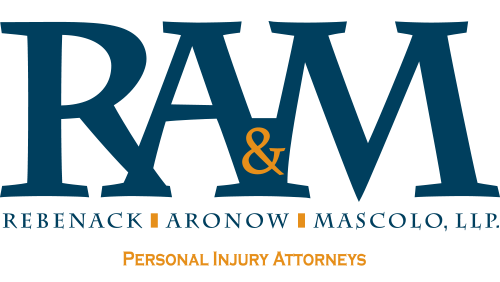How Truck Drivers Are Avoiding COVID-19 Hotspots
The COVID-19 pandemic has dramatically changed life for all, but perhaps no one has been affected more than those professionals who are essential to the American way of life, including truckers. In fact, trucking accident lawyers throughout the country have noted an uptick in cases conceivably caused or at least exacerbated by these additional stresses. Arguably, the greatest challenge facing the long-haul trucker is avoiding COVID-19 hotspots and, when avoidance is not possible, limiting potential exposure to the virus.
Homeland Security Route Planning Tool
The Department of Homeland Security had recognized the potential effect COVID-19 could have on American supply chains in advance of any state instituting a lockdown. Along with the Idaho National Laboratory, the Cybersecurity and Infrastructure Security Agency of the DHS began work on a Commercial Routing Assistance tool, which was launched in early May of 2020. The CRA app is free software that combines many different data streams and allows the trucking industry to plan the quickest possible routes across multiple states while taking into account COVID-19 hotspots, civil unrest, local restrictions and so forth. Better yet, the app can create multiple route options and prioritize them, which allows truckers to have secondary and subsequent options available to them immediately should any issues arise. Data sources for the CRA tool include the:
- American Trucking Associations
- Federal Highway Administration
- Commercial Vehicle Safety Alliance
- Centers for Disease Control and Prevention
- American Public Transportation Association
- Federal Motor Carrier Safety Administration
Suspension and Relaxation of Trucking Regulations
The federal government and state and local governments have relaxed and even suspended trucking regulations in order to remove friction points for truckers. While such regulations are in place to protect truck drivers and the communities they operate in, many are not practical during the pandemic. Consider that many cities have restricted hours for deliveries, and lifting those restrictions makes sense, for instance, if it allows a trucker to deliver to a hotspot at a time when the active population will be lowest. Other ways these changes have affected some truckers include:
- Suspended weight limits
- Extended legal working hours
- Eliminated break requirements
- Delayed license renewal deadlines
CDC Guidelines for Truckers Avoiding COVID-19 Hotspots

The CDC collects substantial data concerning the COVID-19 pandemic. This data can help truckers avoid hotspots and is made even more accessible through the aforementioned CRA software. The organization has also established a webpage dedicated to what long-haul truckers need to know about COVID-19. A focal point of these guidelines is avoiding the need to home isolate, which prevents truckers from doing their jobs. While the CDC advice does not specifically cover avoiding hotspots, it does provide recommendations for interacting with people and services, such as fuel pumps at a filling station, in order to minimize the risk of exposure as much as possible.
Enhanced Fleet Management
Professional trucking is more than just a single person in a big rig on the open road. All truckers—including independent contractors—rely on a network of people and other resources. It is important to note that the agility of American supply chains and the trucking industry in particular has been phenomenal and exceeded most experts’ expectations. Necessity is the mother of invention, and the industry was quickly able to adjust its software and other tools to account for COVID-19. Many experts believe that these tools, which are now more connected and data-driven than ever, will greatly enhance trucking even when the pandemic is behind us. The industry has also succeeded in having route planners, dispatchers and other members of its operation teams work from home. This has kept those individuals largely healthy and able to provide the on-the-fly information truckers often need to avoid hotspots and otherwise mitigate their risk.
Planning Routes Within the Context of Avoiding COVID-19 Hotspots
Modern trucking has been highly sophisticated even before the COVID-19-inspired evolution. Most regular trucking routes are proven and refined. Truckers have always had to change routes because of bad traffic accidents or when, for instance, navigating through a hurricane-battered area, but disruptions were generally few and far between. This is no longer the case, and the new normal means that routes are updated often because local regulations change, an outbreak occurred, a civil unrest event presents dangers to a driver and so forth. Distribution has changed as well. In areas with COVID-19 hotspots, many fleets have eliminated or significantly reduced deliveries to those areas. The alternative is larger loads—often made possible because of waived weight limits—on a less frequent basis and to distribution centers outside the hotspots, which can then handle distribution through the local infrastructure.
Travel Centers, Filling Stations and Other Trucking Resources
Among the greatest challenges facing long-haul truckers is that states and localities often make decisions that affect them without making provisions for them. Consider that some states were closing travel centers in order to discourage the average citizen. The problem was they did not take into account that truckers require these sites in order to do their jobs. On many stretches of highway, these travel centers are the only places for truckers to eat, use the restroom, sleep and fill up on fuel. The FMCSA and other pertinent organizations have lobbied these states and other localities to take truckers into account. In some cases, hotspots are avoided simply because it is not practical for truckers to travel there.
Mobile Apps
The use of mobile apps for truckers to stay connected with their support teams and other truckers is not new to the COVID-19 pandemic, but it has evolved because of it. WorkHound is a great example of a new company founded in response to the pandemic, and its main product is an app that creates a feedback loop between truckers and their support teams. Feedback from the people on the front line helps fleets make better routing and other decisions. There are also numerous networking apps for truckers. If a COVID-19-related problem occurs that a trucker has to deal with without notice, he or she can alert other truckers via these apps, and that provides truckers with up-to-date information specific to them long before it would be available via the other tools.
Taking Precautions
The trucking industry is seeking to avoid COVID-19 hotspots as much as possible. It is limiting routes into these areas and employing creative means of distribution, but avoiding them altogether is not practical. Hotspots are often the most desperate for the supplies and food that truckers are delivering. Some drivers refuse, understandably choosing to put their health before any potential financial gain. Others brave the risk not just for financial gain but through a desire to help our country get past this difficult time. For these brave men and women, the CDC has specific guidelines to help them remain healthy and avoid the need to self-isolate for 14 days.
The Legal Assistance You Need Is Available
According to the National Highway Traffic Safety Administration, there are more than 100,000 accidents involving big rigs each year. The COVID-19 pandemic has only made the job of driving one more difficult. At Rebenack, Aronow & Mascolo, L.L.P., we are trucking accident lawyers who work hard to protect our clients’ rights and to get them fair and just compensation for both physical and mental injuries. RAM Law has offices in both New Brunswick and Somerville. Initial consultations are provided at no cost and without obligation. Schedule a meeting with us today by contacting us online or by calling us at (732) 394-1549.


